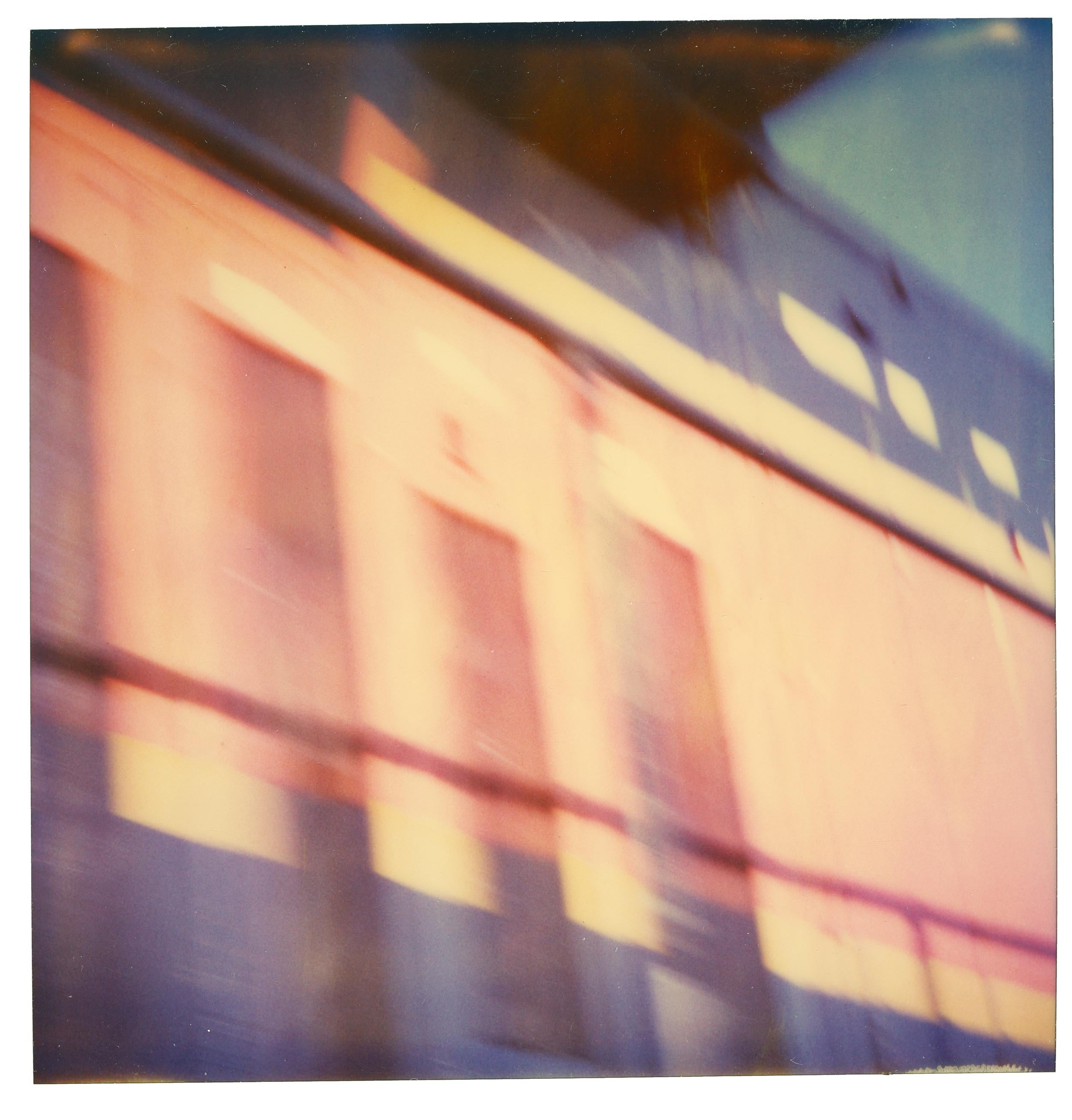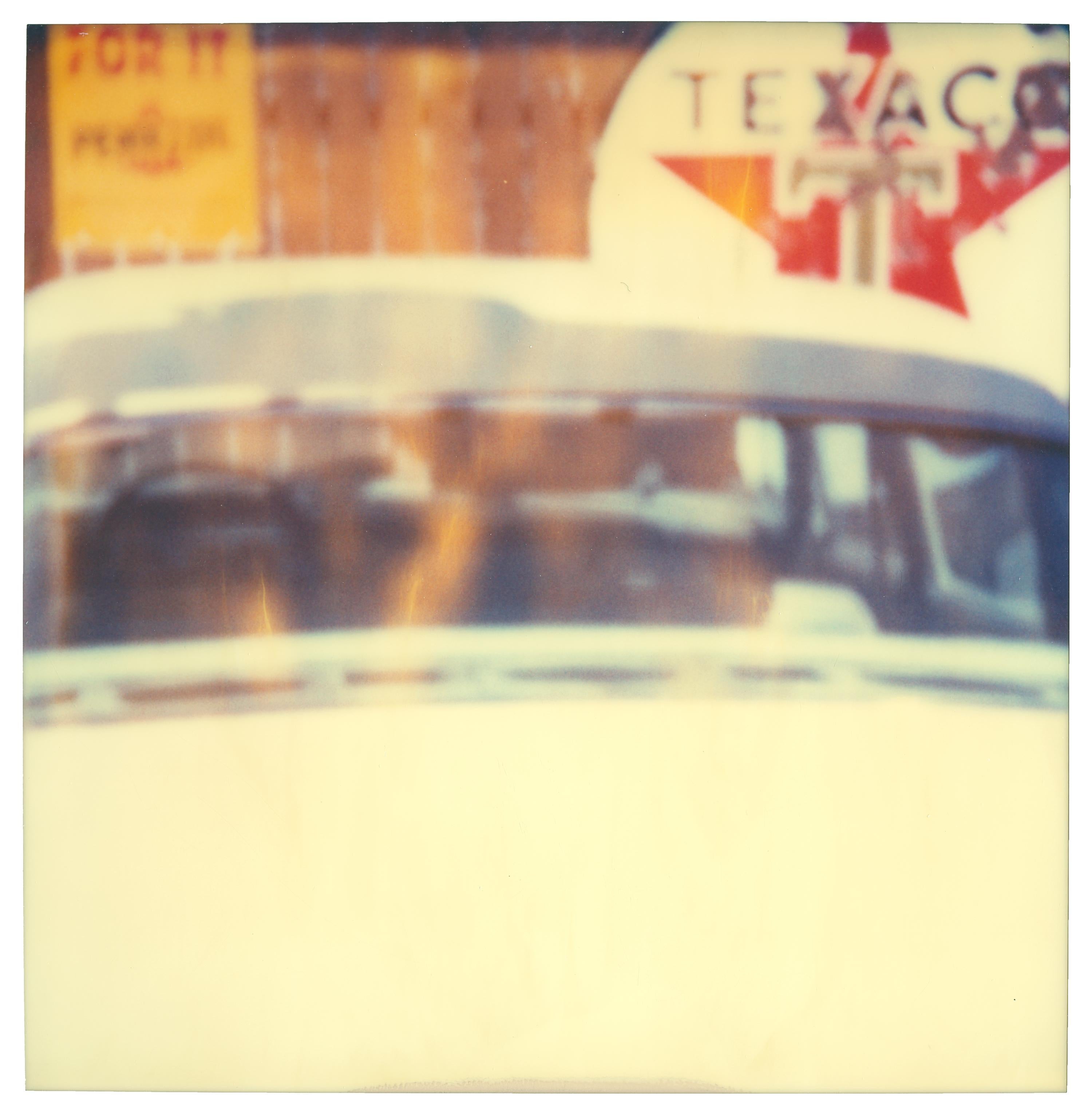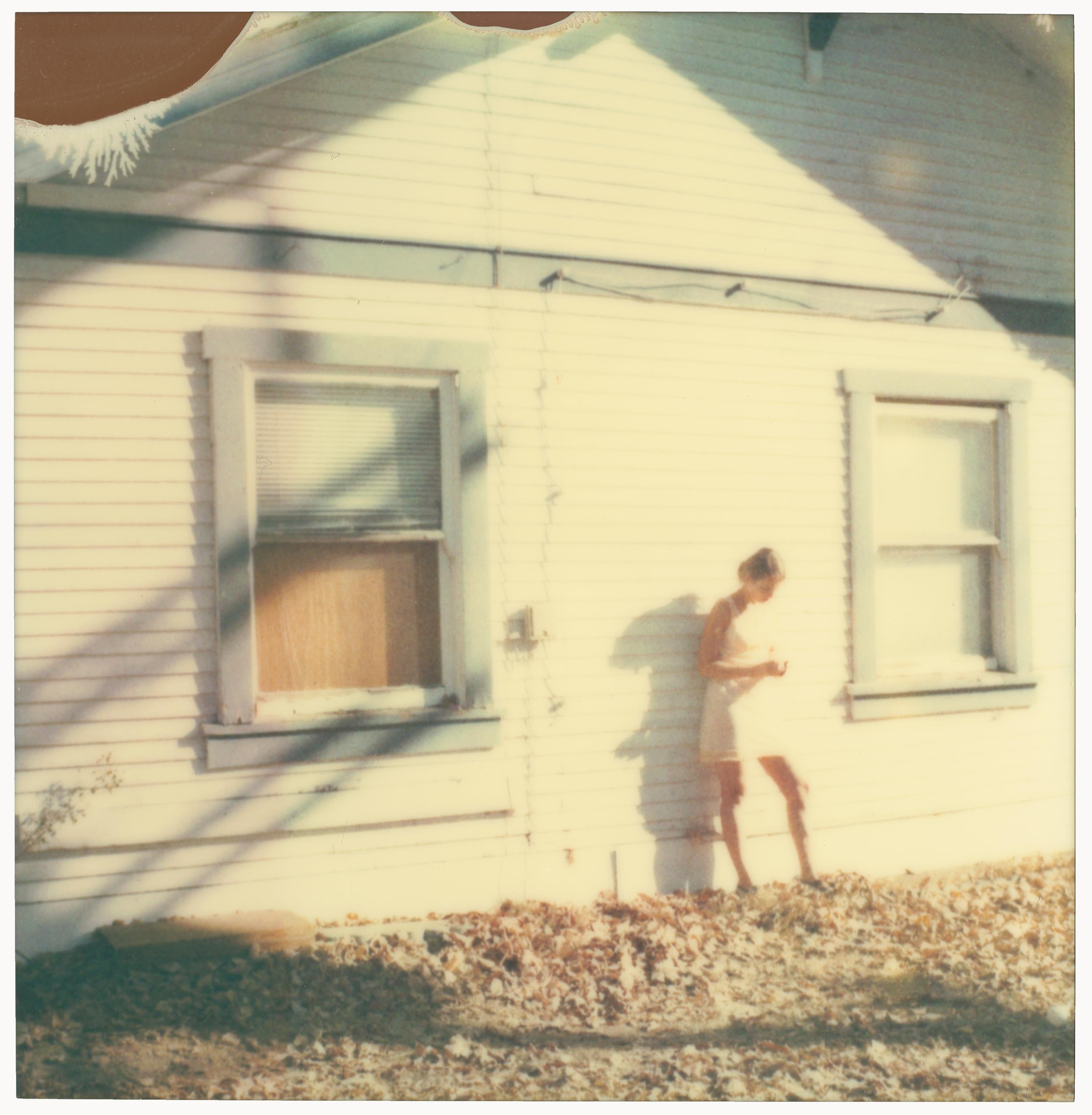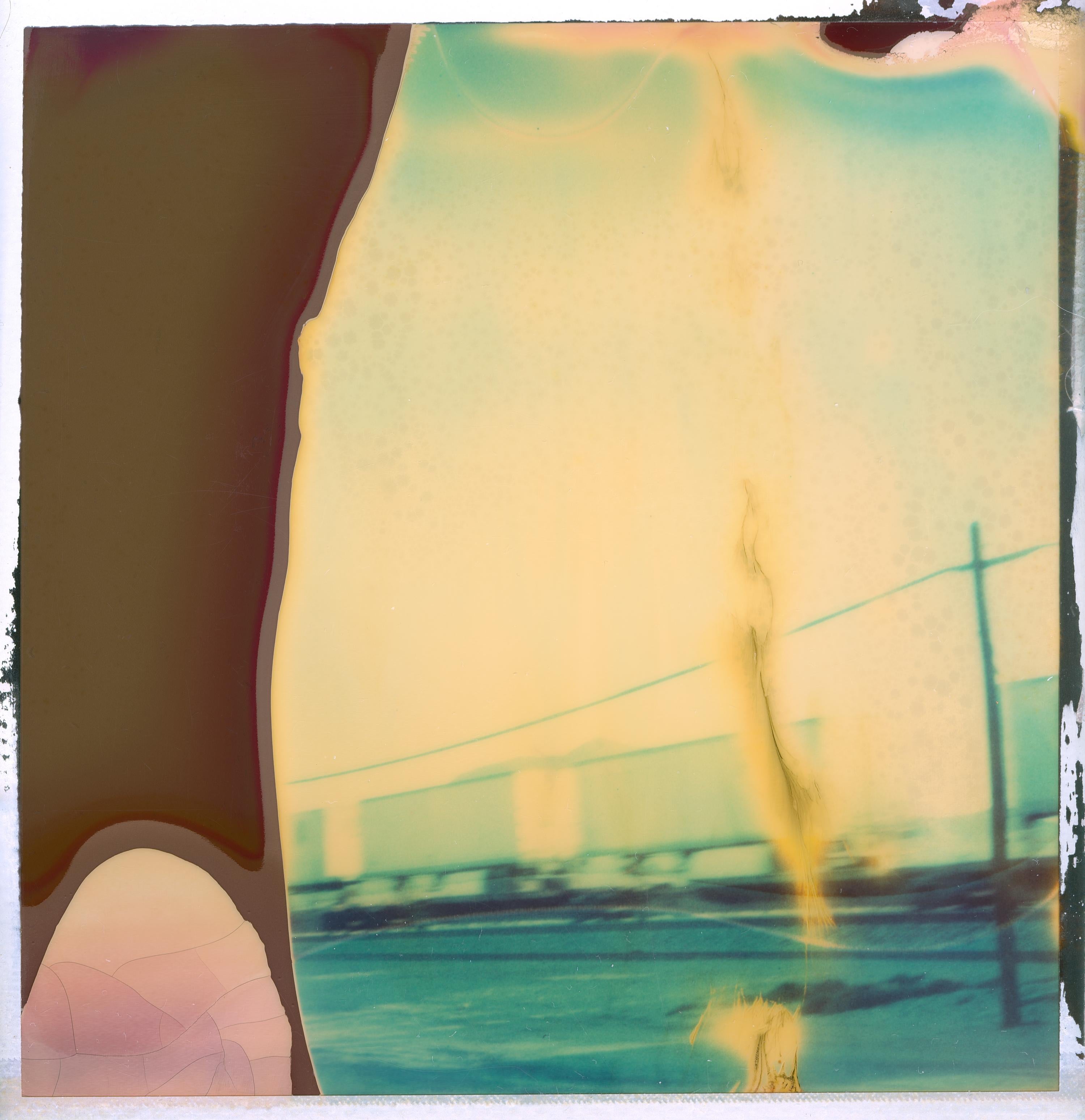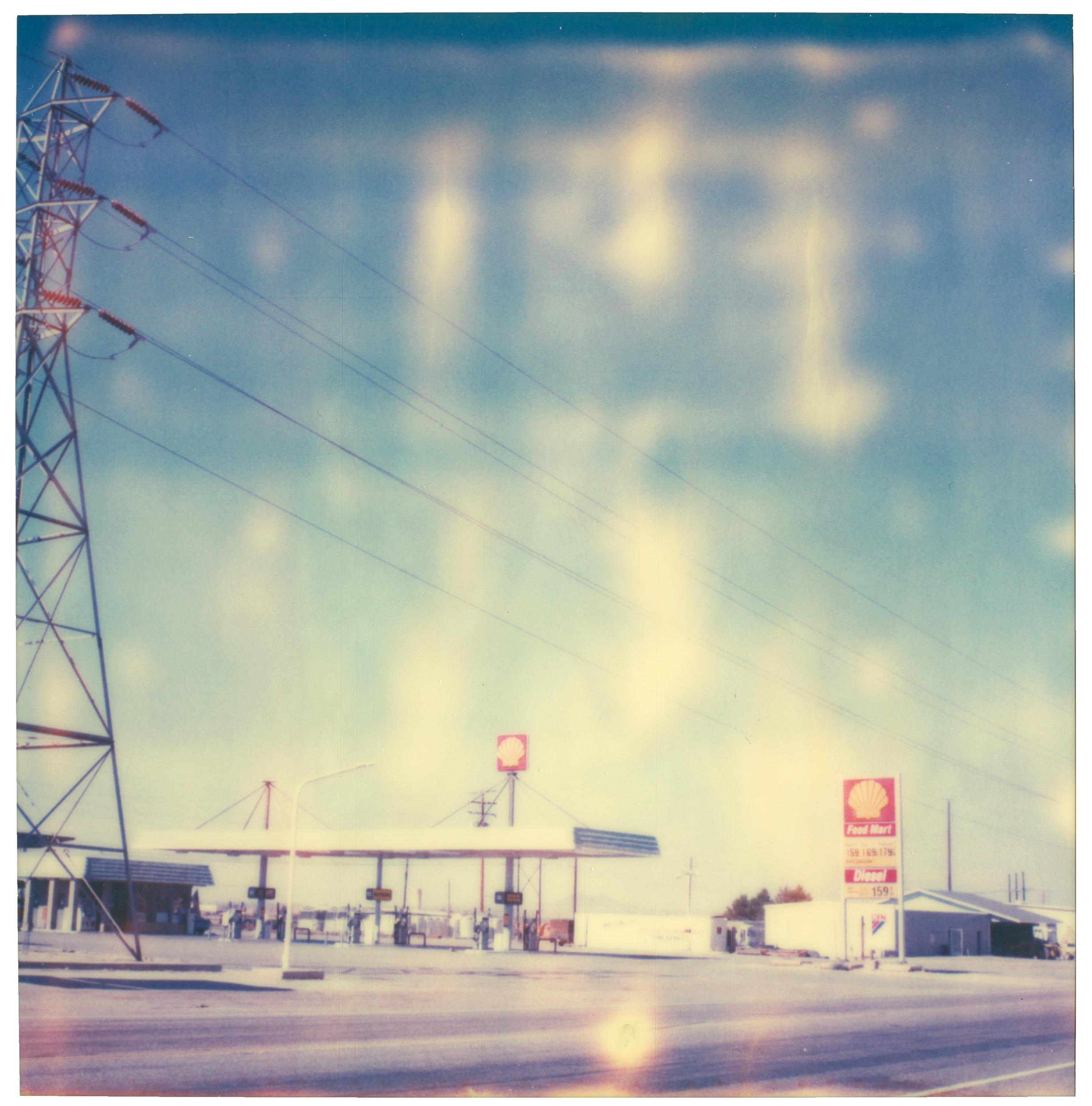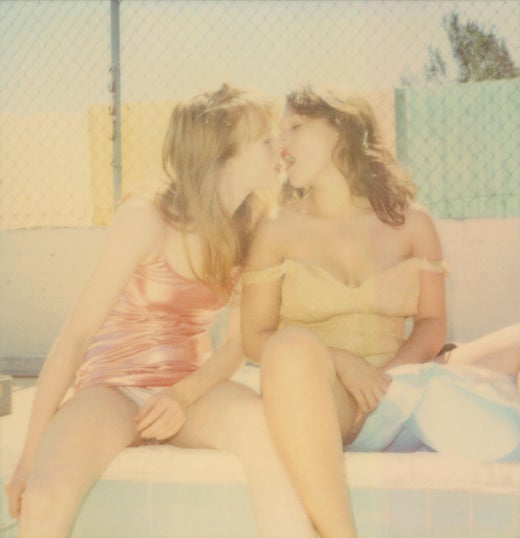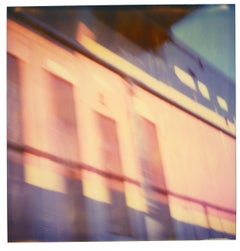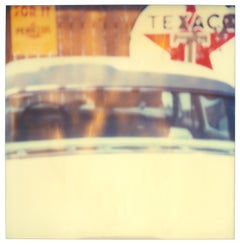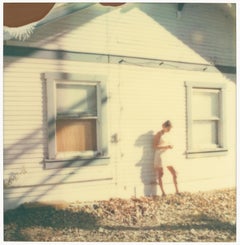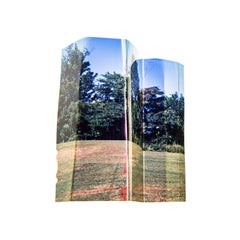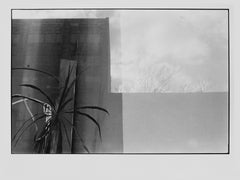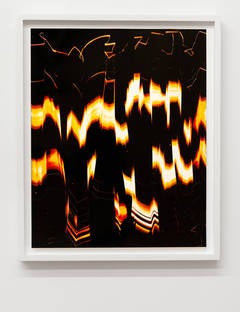Items Similar to Untitled (The Last Picture Show) - 21st Century, Polaroid, Color
Want more images or videos?
Request additional images or videos from the seller
1 of 2
Stefanie SchneiderUntitled (The Last Picture Show) - 21st Century, Polaroid, Color2006
2006
$380
£291.30
€333.41
CA$542.81
A$595.30
CHF 308.32
MX$7,153
NOK 3,882.53
SEK 3,643.87
DKK 2,490.91
About the Item
Untitled (The Last Picture Show) - 2006
20x20cm,
Edition of 10 plus 2 Artist Proofs.
Archival C-Print, based on the original Polaroid.
Artist inventory number: 21150.
Signature label and certificate.
Not mounted.
Published by STRANGER THAN PARADISE published by hatje cantz verlag, Ostfilder, 2006, (monograph)
The works of Stefanie Schneider evoke Ed Ruscha's obsession with the American experience, the richness of Georgia O'Keefe's deserts and the loneliness of Edward Hopper's haunting paintings. So how exactly did this German photographer become one of the most important artists of the American narrative of the 20th and 21st century?
Stefanie Schneider was born and raised in Germany but lives and works in Southern California. Exploring the American dream and capturing it with Polaroid instant film. Situated on the verge of an elusive super-reality, her photographic sequences provide the ambiance for loosely woven storylines and a cast of phantasmic characters that reflect a part of the narrator's life told from her perspective. Often about love, communication. sexuality and relationships. Schneider works with the chemical mutations of expired Polaroid film stock. Chemical explosions of color spreading across the surfaces undermine the photograph's commitment to reality and induce her characters into trance-like dreamscapes. Like flickering sequences of old road movies, Schneider's images seem to evaporate before conclusions can be made - their ephemeral reality manifesting in subtle gestures and mysterious motives. Schneider's images refuse to succumb to reality, they keep alive the confusions of dream, desire, fact, and fiction yet they also explore the relationship between the medium and the viewer. The wabi-sabi 'ness' of Schneider's work can not be denied or ignored. It's a step of acceptance of 'flaws', gaps, and distortions. Missing pieces of the puzzle. The artist flaunts, uses, and exposes the unknown using expired Polaroid instant film intentionally. Presents it. What you do with that is up to you. That missing part of the picture is for you to include yourself, you fill it in with yourself. That might be critical that it's there at all, missing and missing the entire point altogether or by filling in the unknown with their own imagination. Even their own memories then integrate the viewer and artist as one with limitless potential.
Stefanie Schneider's new photographic works tell fantastic stories about her adopted Californian home. She seeks out faded American myths and distills a charged reality in a very personal and surprising way. She uses out-of-date Polaroid film, and the blemishes caused by the degenerated film stock, - are included in the composition in a painterly way. Exposure mistakes and low budget movie effects are combined to alienating effect. Everything shimmers and flickers before our eyes. The artist plays with the authentic poetry of the amateur, mixing strangely dreamy staging with random photochemical events. In the 16-part work Frozen, which is characterized by a strangely transcendent mood in the lighting, film-still-like pictorial clusters come together to form a mysterious story, with the artist herself as the lonely protagonist. the aesthetic is reminiscent of early Lynch films. The components of the elliptically choreographed events are scenes from an enchanted, gleaming winter landscape, together with "staged snapshots" of a pale young woman in her underskirts, who radiates the troubled reality of a mirage with her sleep walking presence. The story is presented in the manner of cinematic flashbacks or dream sequences. Stage blood and a knife are used to evoke a crime of passion whose surreal attractiveness is derived from the scenic openness of what is shown. The deliberate use of old instant picture stock establishes in a richly faceted way the ephemeral quality of vulnerability and transience within a reality that is brittle from the outset. The American Stars and Stripes, recently updated as the absolute epitome of a patriotic signifier, is the subject of the 9-part work Primary Colors (2001). Schneider's reassuringly European view, free of undue emotion, presents the Stars and Stripes motif in a strangely alienated form: she shows stills with phases of fluttering violently in the wind, even torn in some cases, and the expired film stock emphasizes the fragility of the icon even more.
FlashART - Sabine Dorothee Lehner (translated from German by Michael Robinson)
Published by STRANGER THAN PARADISE published by hatje cantz verlag, Ostfilder, 2006, (monograph)
The works of Stefanie Schneider evoke Ed Ruscha's obsession with the American experience, the richness of Georgia O'Keefe's deserts and the loneliness of Edward Hopper's haunting paintings. So how exactly did this German photographer become one of the most important artists of the American narrative of the 20th and 21st century?
Stefanie Schneider was born and raised in Germany but lives and works in Southern California. Exploring the American dream and capturing it with Polaroid instant film. Situated on the verge of an elusive super-reality, her photographic sequences provide the ambiance for loosely woven storylines and a cast of phantasmic characters that reflect a part of the narrator's life told from her perspective. Often about love, communication. sexuality and relationships. Schneider works with the chemical mutations of expired Polaroid film stock. Chemical explosions of color spreading across the surfaces undermine the photograph's commitment to reality and induce her characters into trance-like dreamscapes. Like flickering sequences of old road movies, Schneider's images seem to evaporate before conclusions can be made - their ephemeral reality manifesting in subtle gestures and mysterious motives. Schneider's images refuse to succumb to reality, they keep alive the confusions of dream, desire, fact, and fiction yet they also explore the relationship between the medium and the viewer. The wabi-sabi 'ness' of Schneider's work can not be denied or ignored. It's a step of acceptance of 'flaws', gaps, and distortions. Missing pieces of the puzzle. The artist flaunts, uses, and exposes the unknown using expired Polaroid instant film intentionally. Presents it. What you do with that is up to you. That missing part of the picture is for you to include yourself, you fill it in with yourself. That might be critical that it's there at all, missing and missing the entire point altogether or by filling in the unknown with their own imagination. Even their own memories then integrate the viewer and artist as one with limitless potential.
Stefanie Schneider's new photographic works tell fantastic stories about her adopted Californian home. She seeks out faded American myths and distills a charged reality in a very personal and surprising way. She uses out-of-date Polaroid film, and the blemishes caused by the degenerated film stock, - are included in the composition in a painterly way. Exposure mistakes and low budget movie effects are combined to alienating effect. Everything shimmers and flickers before our eyes. The artist plays with the authentic poetry of the amateur, mixing strangely dreamy staging with random photochemical events. In the 16-part work Frozen, which is characterized by a strangely transcendent mood in the lighting, film-still-like pictorial clusters come together to form a mysterious story, with the artist herself as the lonely protagonist. the aesthetic is reminiscent of early Lynch films. The components of the elliptically choreographed events are scenes from an enchanted, gleaming winter landscape, together with "staged snapshots" of a pale young woman in her underskirts, who radiates the troubled reality of a mirage with her sleep walking presence. The story is presented in the manner of cinematic flashbacks or dream sequences. Stage blood and a knife are used to evoke a crime of passion whose surreal attractiveness is derived from the scenic openness of what is shown. The deliberate use of old instant picture stock establishes in a richly faceted way the ephemeral quality of vulnerability and transience within a reality that is brittle from the outset. The American Stars and Stripes, recently updated as the absolute epitome of a patriotic signifier, is the subject of the 9-part work Primary Colors (2001). Schneider's reassuringly European view, free of undue emotion, presents the Stars and Stripes motif in a strangely alienated form: she shows stills with phases of fluttering violently in the wind, even torn in some cases, and the expired film stock emphasizes the fragility of the icon even more.
FlashART - Sabine Dorothee Lehner (translated from German by Michael Robinson)
- Creator:Stefanie Schneider (1968, German)
- Creation Year:2006
- Dimensions:Height: 7.88 in (20 cm)Width: 7.88 in (20 cm)Depth: 0.04 in (1 mm)
- Medium:
- Movement & Style:
- Period:
- Condition:
- Gallery Location:Morongo Valley, CA
- Reference Number:1stDibs: LU652315303232
Stefanie Schneider
Stefanie Schneider received her MFA in Communication Design at the Folkwang Schule Essen, Germany. Her work has been shown at the Museum for Photography, Braunschweig, Museum für Kommunikation, Berlin, the Institut für Neue Medien, Frankfurt, the Nassauischer Kunstverein, Wiesbaden, Kunstverein Bielefeld, Museum für Moderne Kunst Passau, Les Rencontres d'Arles, Foto -Triennale Esslingen., Bombay Beach Biennale 2018, 2019.
About the Seller
4.9
Platinum Seller
Premium sellers with a 4.7+ rating and 24-hour response times
Established in 1996
1stDibs seller since 2017
1,047 sales on 1stDibs
Typical response time: 1 hour
- ShippingRetrieving quote...Shipping from: Morongo Valley, CA
- Return Policy
Authenticity Guarantee
In the unlikely event there’s an issue with an item’s authenticity, contact us within 1 year for a full refund. DetailsMoney-Back Guarantee
If your item is not as described, is damaged in transit, or does not arrive, contact us within 7 days for a full refund. Details24-Hour Cancellation
You have a 24-hour grace period in which to reconsider your purchase, with no questions asked.Vetted Professional Sellers
Our world-class sellers must adhere to strict standards for service and quality, maintaining the integrity of our listings.Price-Match Guarantee
If you find that a seller listed the same item for a lower price elsewhere, we’ll match it.Trusted Global Delivery
Our best-in-class carrier network provides specialized shipping options worldwide, including custom delivery.More From This Seller
View AllUntitled (The Last Picture Show) - 21st Century, Polaroid, Color
By Stefanie Schneider
Located in Morongo Valley, CA
Untitled (The Last Picture Show) - 2006
20x20cm,
Edition of 10 plus 2 Artist Proofs.
Archival C-Print, based on the original Polaroid.
Artist inventory number: 21140.
Signature ...
Category
Early 2000s Contemporary Color Photography
Materials
Archival Paper, Photographic Paper, C Print, Color, Polaroid
Small Town (The Last Picture Show) - Contemporary, 21st Century, Polaroid
By Stefanie Schneider
Located in Morongo Valley, CA
Small Town (The Last Picture Show) - 2000
20x20m,
Edition of 10, plus 2 Artist Proofs.
Archival C-Print, based on the Polaroid.
Certificate and Signature label.
Artist Inventory...
Category
2010s Contemporary Landscape Photography
Materials
Archival Paper, Photographic Paper, C Print, Color, Polaroid
Untitled (The Last Picture Show) - 21st Century, Polaroid, Color
By Stefanie Schneider
Located in Morongo Valley, CA
Untitled (The Last Picture Show) - 2006
49x48cm,
Edition of 10 plus 2 Artist Proofs.
Archival C-Print, based on the original Polaroid.
Artist inventory number: 1020.
Signature l...
Category
Early 2000s Contemporary Color Photography
Materials
Archival Paper, Photographic Paper, C Print, Color, Polaroid
Fabien (The Last Picture Show) Polaroid, Contemporary, Color
By Stefanie Schneider
Located in Morongo Valley, CA
Fabien (The Last Picture Show) triptych - 2005,
30x30cm each,
Edition of 10 plus 2 Artist Proofs.
3 Archival C-Prints, based on the three original Polaroids.
Certificate and sign...
Category
Early 2000s Contemporary Color Photography
Materials
Metal
Untitled - Traintracks (The Last Picture Show) - 21st Century, Polaroid, Color
By Stefanie Schneider
Located in Morongo Valley, CA
Untitled - Traintracks (The Last Picture Show) - 2006
49x48cm,
Edition of 10 plus 2 Artist Proofs.
Archival C-Print, based on the original Polaroid.
Artist inventory number: 2114...
Category
Early 2000s Contemporary Color Photography
Materials
Archival Paper, Photographic Paper, C Print, Color, Polaroid
Four Corners (The Last Picture Show) - 21st Century, Polaroid, Color
By Stefanie Schneider
Located in Morongo Valley, CA
Four Corners (The Last Picture Show) - 2005
Edition 1/5,
58x57cm.
Analog C-Print, hand-printed by the artist on Archive Fuji Chrystal Paper, based on the original Polaroid.
Artis...
Category
Early 2000s Contemporary Color Photography
Materials
Metal
You May Also Like
Land & Sea VII (A)
By Colleen Fitzgerald
Located in Sante Fe, NM
Edition of 5
Colleen Fitzgerald's series, "Stamina," provides new approaches to conventional subjects by utilizing the materials and tools of photography in non-traditional ways. A unique physical process combines aspects of sculpture and photography, subverting the idealized two-dimensional photograph and providing a new entry point to the enduring photographic subjects of natural landscapes, seascapes, and more.
To create the photographs, unexposed large sheets of positive film are cut and bent into three dimensional shapes before being exposed inside a camera outfitted with a custom film holder that accepts the film as a three-dimensional object instead of as a standard, flat sheet. The results on the shaped film can...
Category
2010s Contemporary Color Photography
Materials
Pigment
Untitled (0302-37), Abstract Photograph on Gelatin Print, 2011
By Koyo Tamaki
Located in Boston, MA
Artist Commentary:
Koyo's photograph of reflections on a glass window resembles the composition of an abstract painting with large, flat shapes and elegant grays.
Keywords: photogra...
Category
21st Century and Contemporary Landscape Photography
Materials
Silver Gelatin
Untitled (Film Noir #1436)
By Bill Armstrong
Located in New York, NY
Type-C print
Signed, titled, dated, and numbered, verso
24 x 20 inches
(Edition of 10)
36 x 30 inches
(Edition of 5)
48 x 40 inches
(Edition of 5)
This photograph is offered by ClampArt, located in New York City.
“Film Noir...
Category
2010s Contemporary Color Photography
Materials
C Print
Untitled (C-1007)
By Marco Breuer
Located in New York, NY
Breuer has consistently challenged the conventions of photography by rejecting the use of camera, film and negative in favor of interacting directly with material. Eschewing conventi...
Category
21st Century and Contemporary Contemporary Color Photography
Price Upon Request
Expired_14_2020 - Photograph by Serena Zeppilli
Located in Roma, IT
This photograph Expired_14_2020 was taken by the Italian photographer Serena Zeppilli.
It is part of the series "I was looking for something that I...
Category
21st Century and Contemporary Contemporary Figurative Photography
Materials
Photographic Paper
Luck
By Sandi Haber Fifeld
Located in Fairfield, CT
Category
